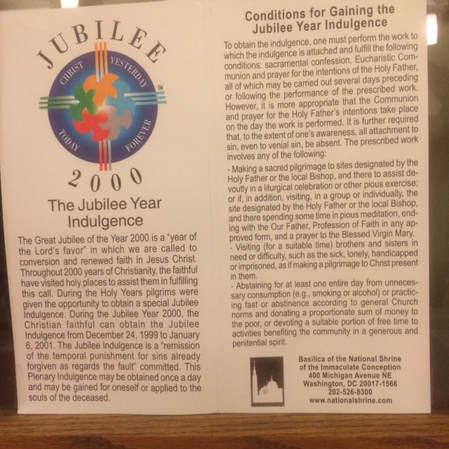 With the opening of the Museum of the Bible close to the 500th Anniversary of the Protestant Reformation, I could not help but notice several evangelical groups jumping on the bandwagon to celebrate the ideas, works, and legacy of Martin Luther, John Calvin, and by extension his most rotund excellency, his royal majesty Henry VIII. Alison Brown, a spokesperson for Museum of the Bible, appeared in an October 2017 video posted to Facebook and stated that in the early Sixteenth Century the Roman Catholic Church had degenerated, or devolved, into a system of penances and indulgences and thanks to the rise of humanism and the existence of Gutenberg’s press, Luther’s theology came forth to rescue Western Europe. But, these are just simplistic, in fact, they are dumbed down, views of key historical events that result in distorted politicized narratives to advance propaganda. And, they end up in comic book theology by the likes of Chick Tracts, which is designed for fifth graders or those, who rely on comic strips for their history and theology. As the wonders of serendipity played out, I happened to be in a Lutheran Church as a venue for a home owner’s association meeting in October 2017. And there, in a Lutheran Church, which takes its name and theology from Martin Luther, was a Roman Catholic flyer for an Indulgence. The fact is the sacrament of confession and the issuance of indulgences exist to this day within the Roman Catholic Church. And, the fact that this flyer was near the altar in a denomination with friendly ties with the Vatican indicates that the wild fire that inspired Luther’s own state church has fizzled out. This installment seeks to provoke the questions as to whether we should celebrate or reflect and reassess during the 500th anniversary of the Reformation. Was it a reformation or a revolt? Should we celebrate or reassess? Did the protestors achieve their aims? Has their legacy succeeded or failed? Or worse, was the Protestant Reformation the beginning of the great apostasy - the great falling away - mentioned in the Bible as a sign of the beginning of the end - a prerequisite for the appearance of history’s last two men to deceive and terrorize the earth prior to the Second Advent? Mythologized History In your run of the mill Protestant propaganda and mythologized history, the narrative can imply this: Prior to Luther the powers that be had outwitted the Almighty and undermined the saving power of the Gospel. From the time of the Emperor Constantine to Luther, salvation had been blocked by the craftiness of men. Hence during that 1200 year period, when the Roman Catholic Church dominated Western European culture, the salvation that Jesus Christ and the Apostles preached ceased to become possible. And thus, due to the incompetence and impotence of God, as is the underlying premise, it took the competence of the German Augustinian monk, Martin Luther, to rescue Western Christendom from the works of the devil and his lies. The Revolt Machiavelli’s political playbook called The Prince was more responsible for the Protestant revolt than Luther’s 95 Thesis. The ideas and their justifications in that political treatise had spread across Europe. The reformers did not reform, they revolted, curried favor with secular princes, and then together established their own state sponsored churches. The revolt then became violent. Luther’s appeal to his own conscience - the divine right of conscience, if you will - trumped the Pope’s claim to apostolic succession and any king’s claim to the divine right of rulership. This maneuver of circular reasoning was indeed clever, but it was also the same maneuver described in Genesis prior to the fall - you shall become gods, and decide for yourselves. With Luther’s words, “... to go against conscience is neither right nor safe,” the opportunity had presented itself to the princes of Europe to continue in the centuries old tug of war with the church as to whose sword should be held higher: that of the church or that of the temporal power. Those in political power, it certainly seemed, could appeal to conscience rather than to orthodox doctrine, bishops, or tradition. What followed Luther’s epiphany was not a reformation, but a series of religious wars more horrific than World War I. My French ancestry traces back to The Thirty Years War, when Etienne and Antoine Hebert fled the Old World due to the apocalypse unleashed onto northern Europe thanks to Luther. Academics playfully refer to Luther as a bull in a china cabinet. Art historians see him as just a jack ass among the fine porcelain that had been handed down by previous generations. These “reformers” then acted like the Taliban, like the Shiites, and like the Ottomans. They destroyed the great murals painted on the church walls - and destroyed far more than that. I have been to several English Cathedrals, like the one in Durham, England, and have seen with my own eyes what happened during the reign of Edward VI. The Romanesque period illustrations depicting many of the key narratives from the Bible - they were all gone. White washed, as if they had never existed. What happened was no different than what had happened when the Ottoman Turks took the Hagia Sophia in Constantinople. The barbarians - yes these so called reformers - vandalized so much of the sacred art, our shared cultural legacy. When I saw the great Durham Cathedral in England, I remembered the same horror, the same feeling of disgust and contempt that I had felt when years earlier I saw the stripped bare walls at the hands of Islamic zeal within the Hagia Sophia in Istanbul, Turkey. There was little difference between these reformers and the jihadists other than the profession of their different faiths. They were cut out of the same fabric. The reformers produced wild fire that scorched all in its path. But, is the comparison of the Protestant “reformers” with Islamic jihadists truly fair? Recall that after the Jews of Medina refused to recognize Mohammed as a prophet, Mohammed turned on the Jews with violence and the Khyber Massacre followed. Similarly, after the Jews refused to convert and heed Luther’s version of the Gospel, Luther directed the confiscation of their books, the burning of synagogues, the denial of safe passage, and more. Luther’s theology of the Jews, in fact, had laid the ground work for Adolph Hitler’s attempt to wed German Lutheranism with the politics of Nazism. Though that failed, the cultural ground work laid by Luther made it easy for the rise of Hitler. In contrast, it should be recalled, Bernard of Clairvaux, a Roman Catholic, forbade harm or ill will directed towards the Jews living in Europe. Jews served as a living testimony of the covenant of God with His ancient people as well as a testimony of His wrath given their scattering. During the Holocaust, Pope Pius XII helped save close to a million Jews as recorded by both Jewish historians and as enshrined in the Holocaust Museum in Israel. But, these are inconvenient facts that undercut Protestant mythology. Wild Fire in the Minds of Men As early as John Wycliffe and with Martin Luther, as noble as their efforts may have seemed to them and their followers in producing a Bible in the vernacular, what resulted were Peasant Revolts. Strange fire in the minds of sincere and easily misguided men took hold. Then, the heavy hand of the state came in to maintain order. What later followed was worse with the likes of Henry VIII, who was a thief, a liar, and a murderer. He declared himself head of his state church, he seized the assets of the Roman Catholic Church, and he also murdered, or should we say lawfully executed, many of his wives. He did not have the decency to unilaterally divorce his many wives and grant them estates with an allowance. Instead, he had their heads cut off in public. Animals do not behave like this great English reformer and patron to the English Bible. Jean Cohen, better known as John Calvin, was an early user of the term Architect of the Universe to describe God. It is a term embraced by Freemasons, and he headed the Reform Movement - a theological term to describe his sect, which was created outside of the Roman Catholic Church. With the advent of Calvin’s theology and the new permissibility to lend with interest, international money lenders returned to England during the reign of Oliver Cromwell and established the Bank of England, a central bank. Usury had been forbidden since 1290 when the Jews had been expelled, under royal decree - the first of its kind - due to usury, debasing of the currency through the widespread clipping of coins, and the public outcry against foreclosures, which in 1215 the Magna Carta had addressed - no deed in lieu of foreclosure - must have a trial by jury. Financial capitalism and total depravity work well together as is evidenced in any economic crisis. No American Protestant in their right mind would have wanted to live in Queen Elizabeth’s England or John Calvin’s Geneva if they knew what these people had created and the penalties for not abiding during their tenure. The same is true of Oliver Cromwell’s England when the Geneva Bible wielding Puritans took control. Yet, in all romanticized and mythologized histories, villains are transformed into saints, tyranny is transformed into religious liberty, and of course doctrinal heresies are transformed into the new orthodoxy. The Legacy With the blows inflicted onto the church by Luther, Calvin, and Henry VIII, Christendom as a unified whole had been divided, and it ceased to function as it had in the past. What followed the Protestant Reformation, the revolt, were incremental degrees of progressive absurdities and increasing stupidities, and it exists in America with a thousand and one designer denominations as evidence that we live in the Age of Apostasy. The Bible did not produce the Age of Apostasy where heresy is the new orthodoxy. The so called “reformers,” their Sixteenth Century formulas for salvation, and their fanatical followers did all of this as they completely forgot how to read a narrative, and instead became jolted by the staccato produced by verse numbers that inspired one line theologies as the basis for new sects and cults. When not satisfied with that, the chain reference method of study came to play as the narrative on the page was thrown out. This was made worse by preachers playing hop scotch with the Scriptures with, “Now turn with me in your Bibles here and there and back to here ... “ in order to create novel edifices for ever new doctrines, practices, and more. The power of a narrative from the Bible to speak to the hearer had been lost. In its place rose the charismatic preacher, who would later insist that the letter of the Word was dead as was orthodoxy. Today, we see the mythologizing of history with overlays of heroic Protestant theology in the form of David Barton’s patriotic Christianity and our American heritage. While it’s true that many of our founding fathers held to Christian values, their deistic theology and anti super natural rationalism suggests that they were not Christians. The Christians, who settled the English colonies that became the United States of America, were Anglicans in Jamestown; Puritans in Plymouth; Catholics in Maryland; Moravians, Quakers, Mennonites, and Amish in Pennsylvania, and so forth. These were indeed good, God fearing people, who wanted to leave Luther and Calvin’s aftershocks behind them as England and Europe continued to quake. Many of the political founders of the Republic, in contrast, were theological deists, and members of secretive societies like George Washington’s Freemasons and Thomas Jefferson’s Rosicrucians. When things did not suit their fancies, like Thomas Jefferson, they took a razor knife to the Scriptures and cut out all of the offending passages - “like dung” to use this enlightened President’s own words - and cast them aside so that the gems could shine. Though Jefferson debased the Scriptures, Museum of the Bible, in one of its other videos posted to social media, considers the Jefferson Bible, the anticipation of higher literary criticism and the Jesus Seminar, worthy of show casing. One of the first Black Lives Matter movements was lead by John Brown, an abolitionist, who decided to take action rather than secure the power of the Spirit - as did Moses, the Prophets, Jesus, and the Apostles - all of whom were partakers to different degrees to the promised Divine Nature. In John Brown, a Bible believer, one man’s freedom fighter became another man’s terrorist. Brown was indeed in the moral right to demand the liberation of the enslaved peoples from Africa - those, who had been reduced to the legal status of property by a deranged Republic dominated by Freemasons and even regarded by many as a curiosity of God’s creation belonging to a pre Adamic race and beyond the pale of redemption. Where the Spirit of God is not, human reason informed by a Scripture verse or two intervenes and the result is not always nice. Brown was hanged by the neck until dead for his failed efforts. The rippling of ironies of this tug of war between the church and state across history are seen in the symbolism in Annapolis, Maryland where State Circle sits at a higher elevation than Church Circle. The state’s governor is the head of the Episcopal Church, and during two terms as the state’s first Jewish governor, Marvin Mandel, a non believer in Jesus Christ, was also the head of the Episcopal Church. Mandel was forced out of political office due to corruption. That same church ordained women and openly homosexual men, and blessed same sex unions - all of these things affronts and mocking parodies of the values clearly described in the Bible. Yet, with “Here I stand, I can do no other ...” and Luther’s Five Solas, “Who am I to judge?" - to quote Pope Francis with intended irony. The End is Near Today, Bible wielding charlatans dominate the airwaves on television and radio and appeal to the come as you are crowd, willing to send in a check in exchange for prosperity since these gullible victims, sheeple, are not taught to repent, to transform their thinking, intentions, speech, associations, and behavior. Oh no. Why place demands on people to change their lives when just faith alone can be easily received. After all, the old religion was stuck in the Dark Ages, which they will remind us, though that phrase came from a hater of the church and atheist: Voltaire. The legacy of the Protestant Reformers also includes the freak side show of Bible believing pentecostal snake handlers and strychnine drinkers in Appalachia. In those hills, gawkers come in to observe the spectacle where side bets are placed as to whether the ambulance will be called yet again to haul away the fool slain not for tempting God, but for his own idiocies. And, consider the Messianic Jews and the Hebrew Roots Movement types. Fake “rabbis,” who have never studied at a yeshiva, preach in places where crosses have been removed - so as not to offend. From them we learn that there is no salvation in the gentile church, his name is not Jesus, it’s Yeshua, and God’s sacred name is spelled G-d in order to give everyone yet more reason to laugh. But, these subversive mamzars, Israel first Zionist infiltrators, who denounce the Catholic, Orthodox, and even Protestant churches as gentile churches, exist to make Judaism or atheism look like reasonable alternatives to faith in Christ. (Recall that in 1983, Marilyn Ferguson explained in her book The Aquarian Conspiracy that the churches would be infiltrated and subverted). They want to dismantle Western culture, which includes public celebrations of Christmas, because these “pagan celebrations” compete with their narrative that hates the legacy of the church of the ha goyim. Among them are the likes of the pentecostal messianic Dr. Michael Brown, who once said on his radio broadcast, “We cannot let the Robertsons of Duck Dynasty become the face of American Christianity.” Why? The 2016 Christian documentary film by Steve Bannon called Torchbearer featured Phil Robertson - and not a Jew, a Freemason, or one of their kind. Instead of taking on the murder of the unborn, legalized by Roe v Wade, we see the likes of the messianic Jonathan Cahn, another self-proclaimed rabbi, who waged a theatrical complaint about the proposed erection of the Temple of Baal in Manhattan. With the triumph of symbolism, the painful reality of child sacrifice continues, and the supernatural portal to permit evil spirits to flow into this dimension is the U.S. Congress and the Supreme Court - not a recreation of Greco-Roman architecture to call attention to Muslims in the middle east destroying historic artifacts. Yet, such is the absurd state of what passes as Christianity in America where “... to go against conscience is neither right nor safe” is the banner of truth rather than millennia old orthodox doctrine to inform and guide us. And so, many reject or walk away from Christ not for rising from the dead, but because of the televised idiocies done in his name and the nonsense done on the weekends, which are then showcased on YouTube. And with Luther’s Five Solas in hand, the fig tree that Christ said would not again bear fruit in their mind is God’s gift that keeps on giving and giving to humanity. Dr. Michael Brown, again, underscores the problem of his own making with, “We have created defective disciples.” Yes, this is what happens due to defective motives, defective theology, defective methods, and defective and deceptive practices. The apple never falls far from the tree. Amidst the morphing of charismatic and pentecostal beliefs and practices in America there has been explosive growth in what should rightfully be called the all embracing Lunatic Fringe. Women moan like cows, men bark like dogs, prophecies never come to pass, well educated church goers drop dead when faith healing does not occur, and preachers blame those in the cushioned seats for not having enough faith. In these bizarre mental constructs that is post Protestant charismatic and pentecostal belief, instead of people heading for the exits, they are mesmerized by the “thou shalt not judge or touch God’s anointed” directives as these charlatans tweak their messages and when necessary become carpet baggers as they move on to exploit other equally uninformed and vulnerable audiences. Among them, another pentecostal messianic, Sid Roth, functions like a Jerry Springer, show casing the latest in the bizarre from the fly over states or the inner cities for those desirous of the signs and wonders and the new things that God is doing in the earth. But, as Rabbi Adin Steinsaltz has insisted, “Who needs God? We have Talmud!” So, with religion in America as it is, the atheist rabbi has a point. The most articulate denunciation of the confusion and nonsense does not come from the Roman Catholic Church, but ironically from John McArthur, who embraces the theology of John Calvin. But, his books ranging from Charismatic Chaos to Strange Fire, which denounced charismatic and pentecostal theologies and practices, are far too polite, because Twentieth Century Christianity is witness to the unveiling of another Jesus, another Gospel, and a spirit quite different from the old time religion of the founders of the faith. And, as irony would have it, McArthur once stated a believer in Christ could repent after receiving the mark of the beast, thus earning him dis-accredidation among listeners. Instead of Sacred Scripture, the Bible as politics and propaganda to promote foreign policy in the middle east came about due to the amazing C.I Scofield and his reference notes, all coincidently assembled when the World Zionist Congress was eyeing Palestine to advance the Rothschild funded colonial settlement project for the Jews. When Dallas Theological Seminary made the Scofield Bible its Bible in the early 1900s, it only took a couple of generations for Christian Zionism to rise into political prominence as that ideology subverted and displaced long held values of pacifism and social justice. Today, the two beasts stand among us. He looks like a lamb, but speaks like a dragon, the serpent of old. He is a clever devil. Deceptive. And, an adversary to the truth. The hundreds of translations into the same language leave those, who indeed seek God, befuddled. With the spirit of inclusiveness and accommodation in mind, even Charles Darwin, Teilhard de Chardin, or an atheist would not be as offended to read, “And a wind from God blew over the face of the waters” rather than “And the Spirit of God hovered over the face of the deep.” In the post reformation era, these are just words, after all, and not Sacred Scripture. Ask any King James Version Only Bible believer, and you will get schooled on the foolishness - in fact, the satanic nature - of the modern translations. And, here in modern Bible translation theory and practice we have the bastard step child of higher literary criticism, like Luther, a uniquely German phenomenon. Dykes, lesbians living in sin with other women, sit in the highest of religious offices in some mainline Protestant denominations. And, in others, same sex unions and marriages take place - grave offenses that would have made the ancient Greeks and Romans blush, because they, actually knew better. Yet, like it or not, these abominations are among the fruits of the Protestant Reformation. These are all part of Luther’s legacy - where each man, sitting under his own fig tree, can decide for himself with him and the Bible alone as to what constitutes sound doctrine and right conduct. When new error is piled on top of old error, and greater errors seek to out do milder errors, we have religion in America, or as Ross Douthout titles his book, Bad Religion: How We Became a Nation of Heretics. It is non denominational, inter denominational, it is mainline churches subverted by Freemasons, Zionists, feminists, New Age occultists, and homosexuals all with an agenda, and each seeking to force fit its vision for the future onto the Bible and their undiscerning followers. No less than a Billy Graham, a Freemason, spread the Gospel, albeit a watered down version, to a generation mired in the sexual and drug revolution. It is packed with imposter apostles, fake prophets, lying signs and wonders, and just cold comfort for change. Among them the parade of ass clowns entertain the herd of goats. And the prophet Balaam rides again with the wind in his back and even ministers in the oval office. The Green family, in its $500 million worth of wisdom in building the Museum of the Bible, saw fit to include on its board of directors Rick Warren, who has a dark cloud of many internet rumors hanging over him of promoting Chrislam, the idea that both Christians and Muslims worship the same God. Whether true or not, there are many who do not approve of Warren ... perhaps due to his ties with the Council on Foreign Relations, that policy group that provides the U.S. State Department with its marching orders. So, my advice to the Museum of the Bible is to hold a dedication ceremony of their holding of the Jefferson Bible and invite the Freemasons, Rosicrucians, and the like, ditch the dumbed down Protestant theology and opinions on the Reformation, drop the mythologized and romanticized historical narratives, and reduce the collection of actual Bibles that will be on display to just artifacts. Without objectivity and neutrality, controversies and offenses are inevitable.
2 Comments
 October, Friday the 13th came and went. That said, that particular day was an auspicious day for at least two reasons. First, the unluckiness of the day has its origins in the slaughter of the leading international bankers of medieval Europe - the Knights Templar. Second, that day this year marked the hundredth anniversary of the visions of the Virgin Mary appearing to three children at Fatima, Portugal during World War I. In the middle ages, the worst person to be was a lender, who had a huge book of receivables with the royal house as the leading client. This was the singular reason for the expulsion of Jews from nation after nation in medieval Europe. If the king could not repay due to moral hazard - borrowing more than his ability to repay, the solution was to enact the royal cram down - or simply abolish the debt by seizing the book of business while enacting an edict of expulsion. This happened in England in 1290, the first of its kind. But, what happened in 1314 in France was a slaughter. The establishment turned against its finest and against its own - and butchered them out of existence and the survivors fled into hiding. King Louis the Fair had 5,000 Knights Templar arrested under an array of insulting and damning charges. What began as a noble cause through Bernard of Clairvaux in 1128 came to a shameful end in 1314. The king could not repay. The king refused to repay. When the king is the law, the case is closed. It happened on Friday the 13th. In the early Twentieth Century, during World War I, the Virgin Mary appeared to three children in Fatima, Portugal. Crowds gathered along with secular journalists and scoffers like the Freemasons, who showed up to ridicule. It was October 13th. The Freemasons, who came to scoff, ended up bombing a chapel in Fatima that had later been dedicated to the Visions. What was the message of the apparitions? Repent. Wars are the scourge of God for living life outside the will of God. World War I ended, but a worse world war followed. Today we sit on the precipice of more wars, expanding wars, and even fears of new wars. And so, October, Friday the 13th came and went. Yet, we all know deep down that talks of peace, blustering talk, and kicking the can down the road - whether it is debt-related or nuclear technology-related - will eventually give way to the chastisement, the scourge, and the painful correction - where the living survivors will envy the dead. 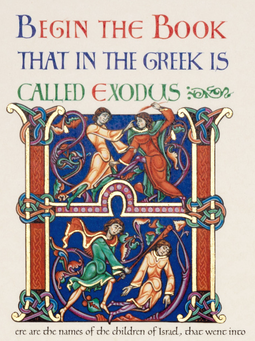 There are key themes embedded in the narratives throughout the Bible. One of these themes is the names recorded in the book of life. The second book of Moses, called Exodus, records the names of the children of Israel, who went in and then came up out of Egypt. God had liberated them through Moses. "... the names of the children of Israel, that went into Egypt with Jacob: they went in, every man with his household: Ruben, Simeon, Levi, Juda, Issachar, Zabulon, and Benjamin, Dan, and Nephtali, Gad and Aser. And all the souls that came out of Jacob's thigh, were seventy ...." Moses, whose name means drawn from the water, kills the task master. Similarly, those baptized into Christ put to death the sinful taskmaster at work in their carnal natures. The end result is the promise in Revelation, the apocalypse of Jesus Christ in the final redemption. Those, who overcome shall be called sons of God. Their names will be forever recorded in the book of life. Our tribute to this central theme of redemption is beautifully depicted in our gold leaf illuminated by hand page from the Crusader era Romanesque Bible in English, which we hope to produce. This year, Rosh Hashanah falls on September 20th, and it marks the New Year in the calendar that marks times and seasons, or appointed times, in the Bible. You can own this double-matted collectible print by ordering it today online or by calling (or texting) 240-559-8535 to order. 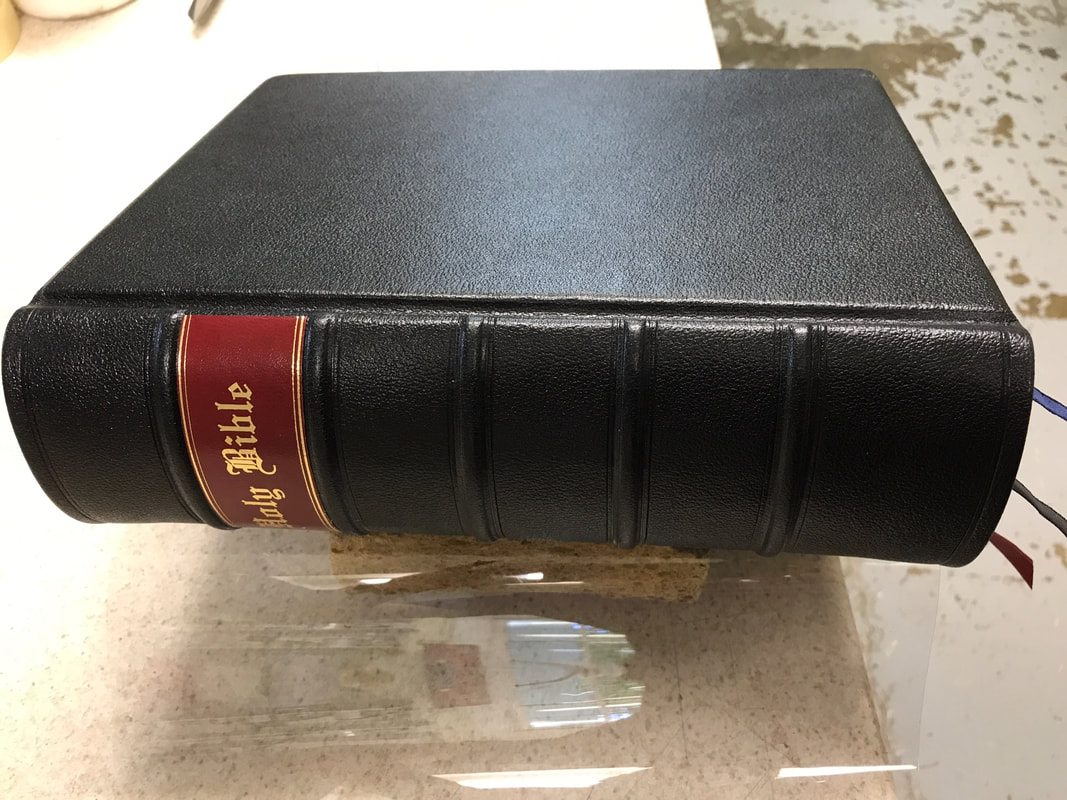 We zeroed in on a book binder. We then tested the binder’s workmanship with a hard covered high end facsimile edition of the 1611 King James Bible produced by The Bible Museum, Inc. Our specifications were for a period binding in black Moroccan leather with raised bands. We were so pleased with the workmanship and the transformative end result that we decided to broaden the scope of Reproduction Bibles to include Renaissance and Reformation period Bibles in facsimile where we step in as a Value Added Reseller by providing select offerings in hand crafted period bindings in real leather. This facsimile reproduction of the 1611 King James Bible, first edition, measures approximately 11 inches tall by 8.75 inches wide by 3.5 inches thick, and weighs about 10 pounds. It is big. It is heavy. And, it is beautiful. This King James Bible has crisp and sharp details. Each page was computer-scanned from the original, and printed on heavy cream colored paper. The period binding we have produced finishes this Bible into a master piece. A collector’s item. The black letter typeface of the original King James Bible builds on the earlier Authorized Versions for the Church of England. We believe that the punch cutter for the blackletter typeface was Dutch. That same typeface was used in the Great Bible of Henry VIII, the Bishop's Bible under Queen Elizabeth, and also the King James Bible. This edition contains the full prefatory content: The Dedication to King James, the translator's To The Reader Preface, the Calendar, the Holy Land Map, the Genealogy, and of course the entire Old Testament, Intertestamental Books (as specifically mandated by King James), and New Testament. This bible is exactly as it was published in 1611. It's the real thing as authorized by King James and appointed to be read in the churches. Some curiosities: The word “Easter” is not in any Hebrew, Greek, or Latin Bible, yet it appears in the King James Bible. Also, the name “Lucifer” is not in any Hebrew or Greek Bible, yet it appears in the King James Bible. That word is Latin and comes out of the Vulgate, which the translator’s claimed they distanced themselves from.The fact is this: the King James Bible translators looked to the Douai-Rheims translation of the Latin Vulgate into English. The New Testament translation was relied upon more so than the Bishop’s Bible to inform its eventual direction, and the Old Testament was looked at to convey the key concept of God’s arch rival for the hearts and minds of men. Bibles like this, pulpit Bibles, sell for about $700 and up. We have priced ours at $525. That is about ten times the cost of a typical Bible that too often ends up in a used bookstore, but this one is a hundred times nicer and destined to become a treasured family heirloom. We will dedicate a portion of the sale of this Bible to Hurricane Harvey relief. 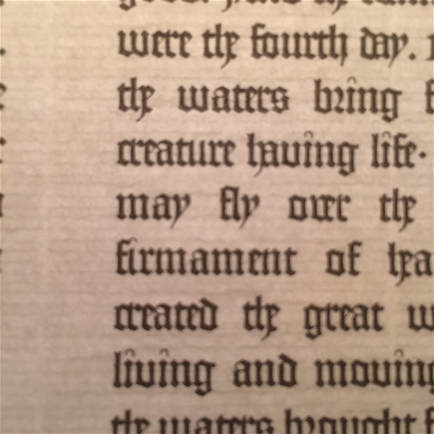 Close up photo of the paper we are using for the 36 line Gutenberg Bible in English Close up photo of the paper we are using for the 36 line Gutenberg Bible in English We have zeroed in on a binder for our 36 line Gutenberg Bible in English. The bidding process for binding the works proved to be interesting. There are not that many binders in the country, and not all binders are ready or willing to sew and bind. Also, not all binders are willing or capable of producing a period binding. Our concern is that as the decades pass, book binding may become a dying art due to the advent of digital books. We ran into a speed bump months back due to one of the prologues in the medieval Bible, which had not yet been translated into English. Interesting that only one had never been translated from Latin into English. We conducted a relentless search for text based documents in a digital format with the prologue, and found them. We then produced side by side renderings of the prologue with the screen shots from the Gutenberg Bible, the text in Latin in modern spelling, and our own translation efforts using Google translate, which performed fairly well in helping us to produce a pretty good draft. We then had our work reviewed by Francesca Colaianni, a neighbor and multi-lingual educator; and then Dr. Robert Brewer, a teacher of classical languages at Georgetown Preparatory School. As serendipity played out, we stumbled upon a moralized Bible with prefaces in the Spanish language produced between 1301 and 1400 at the National Library of Spain. We extracted the prologue in question, which was then reviewed by Mabel Ramirez for the purpose of producing an English translation and then carefully comparing it with our prior efforts. The prologue in question is the long introduction to Paul’s epistle to the Romans. The unknown writer of this prologue sets up a back and forth argument between the Jews and the Gentiles concerning God, the Law of Moses, God’s divine favor, idols, and Christ. The purpose of the prologue is to set up the reader for the text of Paul’s arguments laid out in the epistle. With these aforementioned updates made, we will be conducting a careful review of our finished work in order to make any necessary adjustments prior to printing. Once the final review is done, then we print, sew the signatures, and then turn the text blocks over to the printer for cutting and binding. 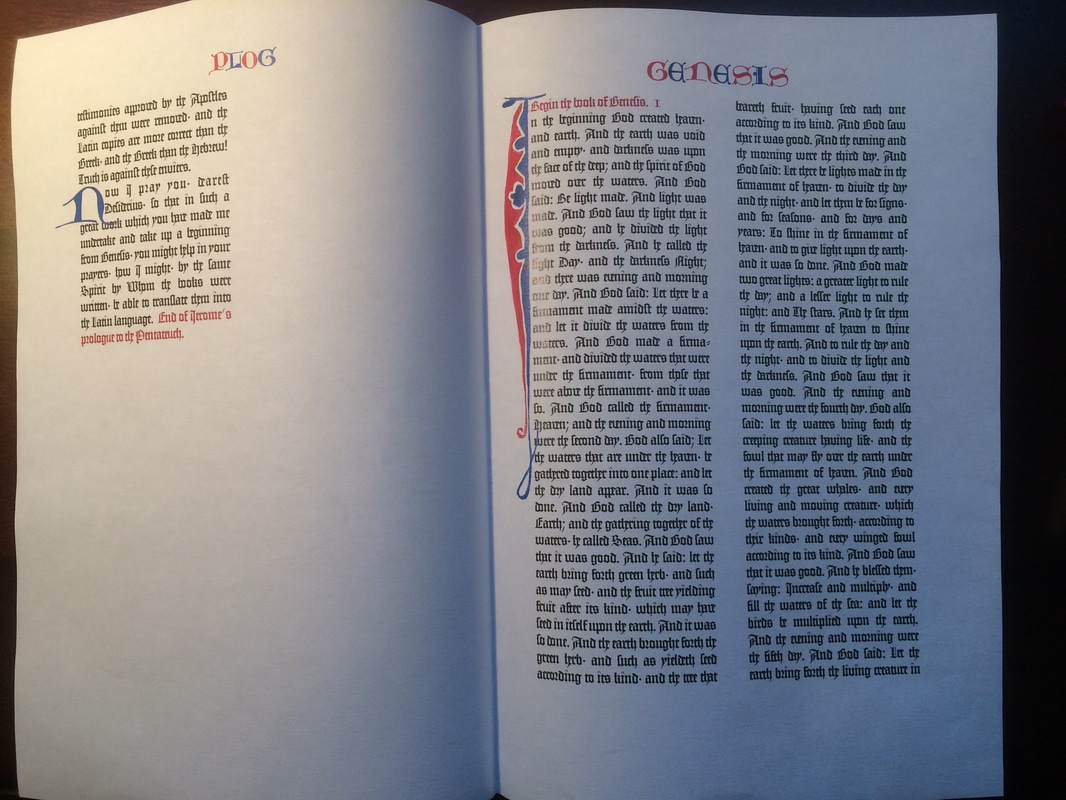 Reproduction Bibles is pleased to announce that our first to print publication in the que will be a 36 line baby Gutenberg in a hand held format. This edition will be approximately 7 1/2” wide x 11” tall. This is larger than your typical bible, which tends to measure in at a smaller size and with smaller text sizes as well. Our edition will be 15” wide x 11” tall when opened. This edition is similar to what is properly known as the Bamberg Bible. The mathematics behind our design format seeks to be as close as possible to the golden ratio, or the 2:1 ratio, which is why a well designed book such as the Gutenberg Bible is pleasant to look at when opened. Simply put, the width of a page is two-thirds its height. The same formula applies to the text block. That is the secret embedded in the medieval manuscript bibles as well as the Gutenberg, which sought to come as close as possible in order replicate the look and feel of a manuscript bible. Since the established purpose of Reproduction Bibles is to reproduce medieval bibles, as they appeared, but in the English language, our edition will be true to period. There will be no doctrinal or denominationally oriented foot notes. There will be no cross references. And, there will be no verse numbers. Instead, the authentic gothic textura text font, designed in Germany based on the actual Gutenberg Bible, will be punctuated by period Roman numeral chapter breaks, book opening letters, and chapter opening display letters, which were hand painted and then digitized for placement. (See photo below). We used the Gutenberg held by the Library of Congress as our model for developing our hand painted letters. There will not be any gold leaf illumination in this edition. Every single epistle, prologue, preface, and argument that appeared in the Gutenberg in the Latin has been translated into English* and are part of our edition. *We are still working on translating about 200 words of Latin into English in one of the two prologues of Paul’s Epistle to the Romans. One of the delightful finds in our research is that not all of the prologues from the Latin Vulgate, the text of the medieval bible, were written by Jerome. Scholars believe that several were written by some, who fell out of favor with the church due to non orthodox views. These other writers are believed to have been Pelagius and Marcion. Our edition features sixteen page gatherings that will be smyth sewn - the proper way to produce a book so that it lasts and so that the book lays flat when opened. Our paper, not shown here, will be a high quality, acid free archival paper designed for high end digital printers that has some grit to the texture as well as subtle patterns similar to what is seen in the paper used by Gutenberg. Yes, the cost of the paper is higher than your typical book. But, this is not your typical book or your typical bible, which is cluttered with far too much text on a single page. Our color matching has been done, and we will be ready to go to print when completed since there remains the final stage of formatting, which is the placement of the headers, book opening letters, and display letters for chapters. When we zero in on the binding, we will issue another update. 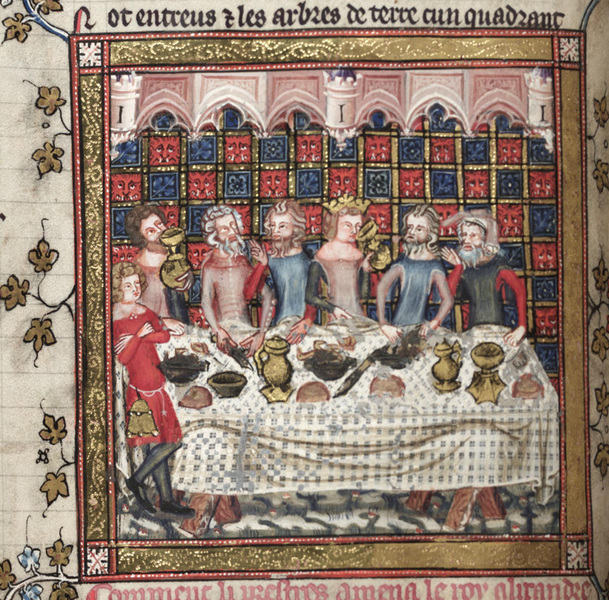 Boolean Library, MS Bodley 264. Boolean Library, MS Bodley 264. The harvest moon in the middle ages ensured a longer working day to pick the fields clean. What followed was the harvest celebration from village to village across Europe and England. And rightfully so. It was hard work. You see, in the medieval world there were three classes. Maybe four. Warriors learned the art of warfare, and when they weren’t plundering, they defended the realm from the likes of Viking raiders, Islamic jihadists, and marauding Magyars. Priests prayed. They studied the teachings of the church and taught them to the community. And, farmers tilled, planted, and harvested the fields. And, of course, there was the merchant class that developed more gradually. In the churches, the reading portion of the liturgical year focused on the thanksgiving offerings to the Lord found in Leviticus. In their synagogues, the Jews also worshipped in thanksgiving with similar reading portions praising the Almighty for His bounty of the earth, the bread from the grain and the wine from the grape. In the middle ages, a feast might start with a suckling pig with an apple in its mouth roasted on a spit finished off with lemon cakes. Music, of course, filled the great halls to those invited to celebrate. Own a piece of medieval history, for yourself, or as a gift. Our large format gold leaf illuminated opening to Exodus celebrates freedom from bondage. Their names were engraved into the book of life. They had every reason to celebrate. They had been set free. Ideal as a gift for Thanksgiving or Christmas. 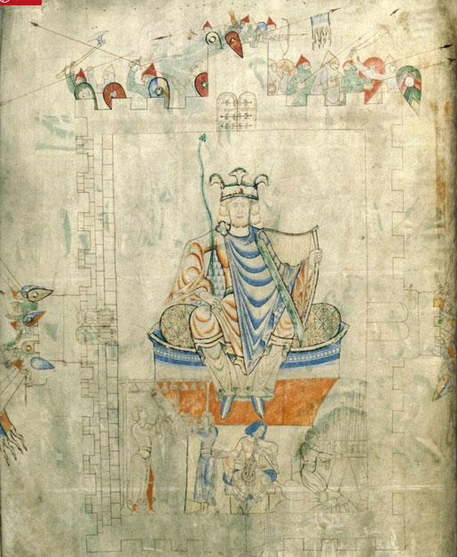 Bible of Stephen Harding DIJON, Bibliothèque municipale, MS 0014, folio 13v Bible of Stephen Harding DIJON, Bibliothèque municipale, MS 0014, folio 13v In 1118, Stephen Harding, the abbot of Citeaux Abbey south of Dijon, mentors and befriends Bernard of Clairvaux, and expresses an interest in translating books from the Old Testament since they describe treasures buried beneath the Temple Mount where Solomon’s Temple stood. Harding's convictions about the veracity of specific passages of the Old Testament change the course of western history. Bernard of Clairvaux, one of the most influential men of the period, then taps his nephew Hughe de Payens to establish the Order of the Temple of Solomon in Jerusalem. The following year, Count Hugh of Champagne, the patron of the Cistercians, goes to Jerusalem and nominates his vassal Hughe de Payens to become the Grand Master of a proposed new order to be named the Order of the Temple of Solomon (Knights Templar) under the Rule written by Bernard of Clairvaux with their express mission being to protect pilgrims on their journey to visit the Holy Places. King Baldwin II of Jerusalem and Warmund of Picquigny, the Patriarch of Jerusalem at the Council of Nablus, grant approval for the order of the Knights Templar in 1120 and also grant the Temple Mount as their headquarters. In keeping with the convictions of Harding, the Knights Templar excavate under the Temple mount for nine years between 1120 and 1128 . They, no doubt were in search of the treasures of the Temple, which would have dropped below the Temple Mount for safe keeping when Jerusalem came under siege, which happened in 70 A.D. when the Romans destroyed the city and the Temple. The order of the Knights Templar is recognized by Pope Honorius II in 1129, and he grants the order unlimited power and freedoms. Relics and treasures, no doubt, made their way to Rome and to Europe after the knights unearthed the buried hoard. Own a piece of this remarkable period by acquiring a gold leaf illuminated poster. 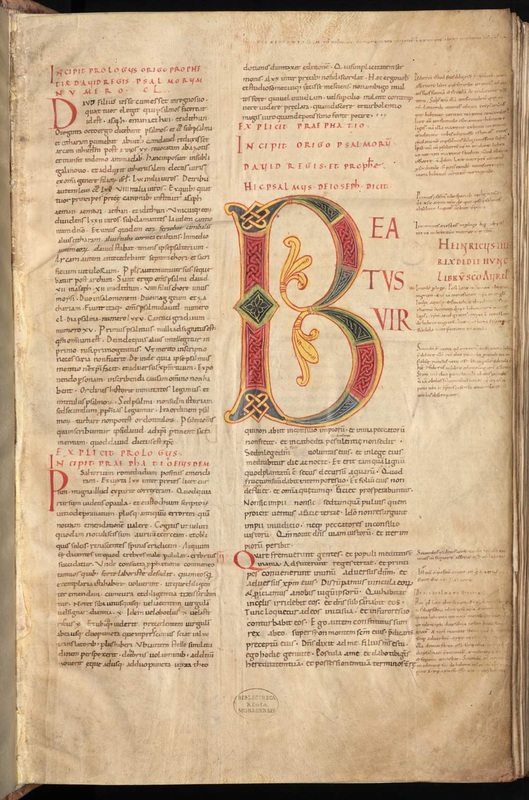 Jerome’s prologue followed by the Psalter of Volume II, BSB Clm 13001, Bavarian State Library, Munich, Germany. Jerome’s prologue followed by the Psalter of Volume II, BSB Clm 13001, Bavarian State Library, Munich, Germany. It was the best of times. And, it was the worst of times. Great, lavish and monumental Bibles were being produced across Europe in the Eleventh Century. And, a 50 year civil war took place over the tug of war of political and ecclesiastical power. At issue was a simple question: Who determines who becomes a bishop or a pope? The state? Or the church? While this might sound like a question buried in the obscurities of medieval history, the fundamental issues that come out of the answer to that question resonate to this day. In the year 1075, King Henry IV, king of Germany, gave a Great Bible to the Benedictine monks at the Hirsau Abbey. The public gesture was one of good will and an act of piety that demonstrated the alleged subservience of the state to the church in moral and spiritual matters. King Henry IV went on to become Emperor Henry IV of the Holy Roman Empire and King of the Romans. In spite of the act of good will, the Investiture Controversy began as a power struggle between Pope Gregory VII (1072–1085) and this same Henry IV, Holy Roman Emperor (1056–1106). In 1083, Emperor Henry IV besieged Pope Gregory VII in Rome. The pope called on the Norman duke of Apulia, Calabria and Sicily, Guiscard, who at the time is warring against the Byzantine Emperor Alexius I Comnenus. Guiscard with 36,000 men escort the pope to safety to the Lateran Palace. The people of Rome rioted in protest to the Norman presence of paid mercanaries. The Normans then sacked and burned the city over a three day period. Like the past, the present is no different. It is the best of times. And, it is the worst of times. The person - or political party if that was possible, who determines the leadership of the church dictates the direction of the church. Consider the issues raised by Wikileaks. See this Great Bible at Bavarian State Library, BSB Clm 13001. 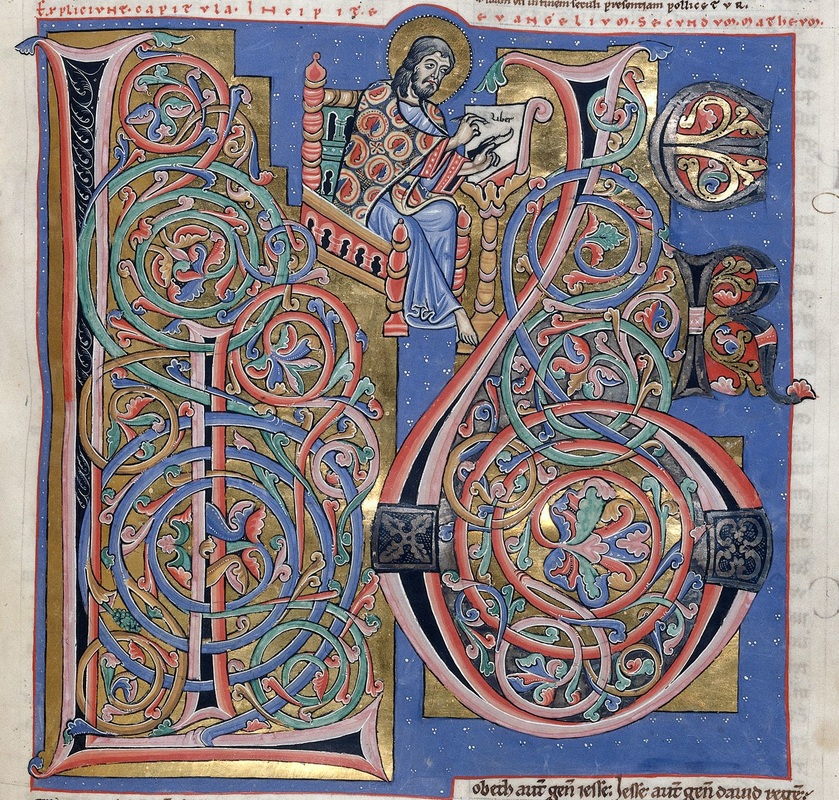 Illustration of the Apostle Matthew, Arnstein Bible, Vol II, British Library, Harley 2799, folio 155 Illustration of the Apostle Matthew, Arnstein Bible, Vol II, British Library, Harley 2799, folio 155 In the middle ages, switching careers happened. The monastery was an option, and those with resources gave generously as an act of piety. Sometimes motivating factors were an act of penance or circumstances beyond their control like a civil war. Consider the case of Ludwig III, the last count of Arnstein in Germany. Lothair III of Supplinburg was the Holy Roman Emperor from 1133 until his death in 1137. He had been King of Germany and King of the Romans from 1125 to 1137. Civil instability followed the transition of power not due to a lack of viable candidates as successors to the throne, but due to the determination to eliminate all competitive threats to the throne. In 1138 Henry the Proud, the duke of Bavaria (1126–1138) and of Saxony (1137–1138) was a candidate for King of the Romans. Conrad III, however, defeated him in the election by nobles and ecclesiastics with the papal legate Theodwin as witness. Conrad III then seized the territories held by Henry the Proud and gave the Duchy of Saxony to Albert the Bear and Bavaria to Leopold IV of Austria Civil war broke out and Conrad III was never crowned by the pope as emperor. In 1139, no doubt amidst the civil turmoil, Ludwig III von Arnstein transformed his castle on the Lahn River into the Arnstein Abbey. He then joined the order. The circumstances that led to that more than likely was the civil war following the election of the new king. In 1146, Bernard of Clairvaux preached the Second Crusade at Speyer. Conrad III heard the call and went on the Second Crusade. The Seljuk Turks, however, defeated him in the second Battle of Dorylaeum in 1147. In 1172 a monk named Lunandus participated in creating the Arnstein Bible, which is now in two volumes in the British Library. See Harley MS 2798 and Harley MS 2799. This two volume great bible is one of the superb lasting legacies from the period. |
AuthorPeter Hebert Archives
March 2021
Categories |

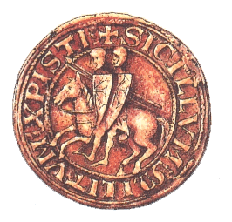

 RSS Feed
RSS Feed
